Last Updated on
Guided Smart Weapons for Riflemen
Project White Feather was a US Special Operations Command (SOCOM)-sponsored effort to improve sniper weapon fire control technology to help extend effective range and increase first round hit probability. As envisioned, the fire control improvements were to provide the shooter a real-time, ballistically corrected aim point with input from a laser crosswind detector, laser range finder, inertial sensors that measure weapon motion, as well as other sensors.
The Weapons & Materials Research Directorate of the Army Research Laboratory published a white paper entitled Sniper Weapon Fire Control Error Budget Analysis (ARL-TR-2065) about these tests. One interesting revelation was weapon pointing (aiming) error analysis, or the ability of a shooter to hold his or her aim on target. According to their tests, the standard deviation of aiming error for the best, formally-trained operational snipers was three times worse than tested High Power and Long Range competition shooters. In fact, the worst competition shooters tested were as good or better than the best snipers in basic holding and shooting fundamentals. This is simply raw marksmanship fundamentals, and it doesn’t take into account shot error due to range, wind or environment estimations, and all the things that can spoil an otherwise well pointed shot. Testing also revealed that on 1000 yard humanoid silhouette targets operational snipers have first shot success probability of only 3%.
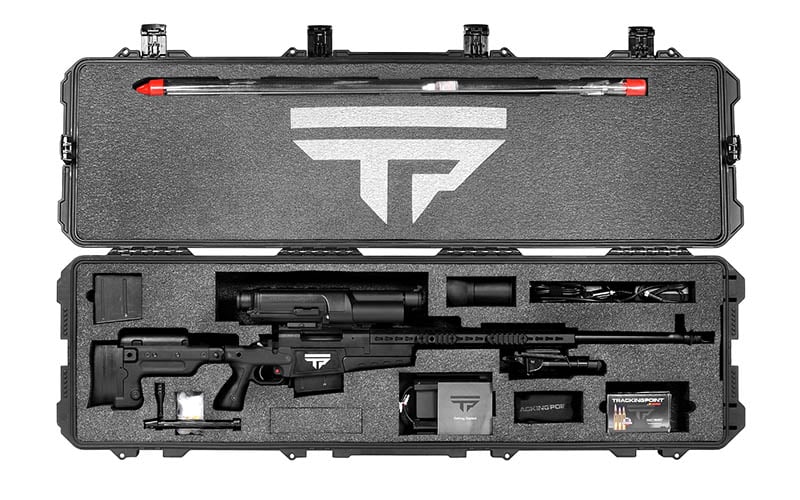
These SOCOM sponsored tests were not intended to denigrate snipers, only to point out that hitting at long range is difficult and fraught with many variables. Better training reduces error, as the competitive shooters prove, but this requires time and effort. A sniper or other shooter not personally motivated to take up organized competition on a regular, on-going basis will remain the biggest source of error in any shot.
Precision Guided Firearms (PGFs)
“Smart bombs” have been known to even casual, non-military observers for several decades now. Precision Guided Munitions, as they’re more correctly called, typically work by allowing for corrections of the projectile after launch. With so many variables influencing a projectile, the means to make adjustments during flight greatly increases hit probability. Guidance can be accomplished by radio, infrared homing (heat seeking), laser, satellite (GPS) or other means.
Cannon Launched Guided Projectiles, such as the Copperhead, can work but there are problems due to the high accelerations needed to get projectiles up to speed. Keeping electronic components inside working after being subjected to accelerations thousands of times the force of gravity is daunting and considerably more complex than a proximity fuze. Joint Direct Attack Munition (JDAM), which modify existing unguided “dumb” bombs are cheaper, more effective and accurate. Consider small arms. If it is difficult and expensive to fit adequate electronics inside a 155mm explosive howitzer projectile six inches in diameter, it’s impossible to have the same guidance inside a bullet less than a third of an inch across.
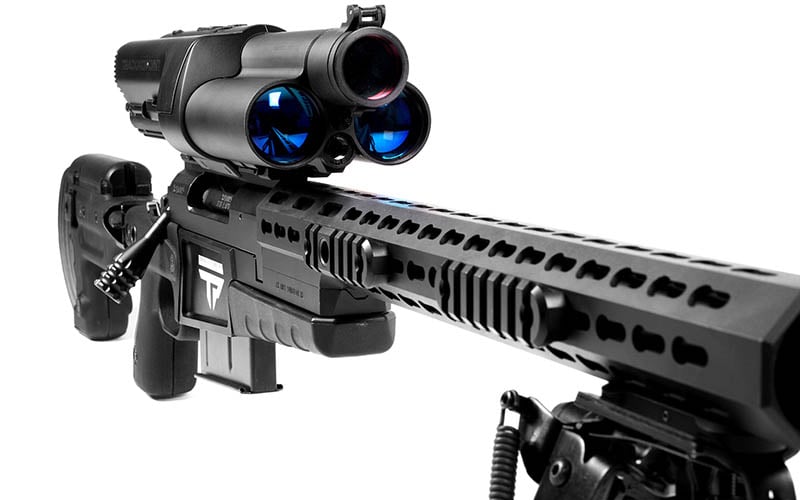
A working solution for small arms is to better guide the rifle, not the projectile. Ballistic problems can be solved instantly with a computer smaller than the processor in your cell phone and sensors can automate the input of variables, feeding updated information real time. Distance to target, weapon attitude (slope angle and cant), ambient temperature and barometric pressure can all be detected and compensated for within an algorithm, given that the projectile’s muzzle velocity, ballistic coefficient and spin drift are known. While there isn’t yet a working solution, laser detection of wind speed and direction along the gun-target line has shown some potential.
The last remaining problem is the person holding and actuating the trigger. Despite a perfectly predicted ballistic solution, any shooting error will still spoil the shot. Even if the sights indicate exact point of impact, the shooter must hold them on target and release the shot without disruption. It takes years for a dedicated competitor to achieve this, one reason Camp Perry competitors are 300% better at holding and eliminating aiming error than operation snipers according to SOCOM’s tests. With most people not as good as trained snipers and not motivated enough to take up competitive shooting, the problem remains daunting. A PGF also has to remove this problem.
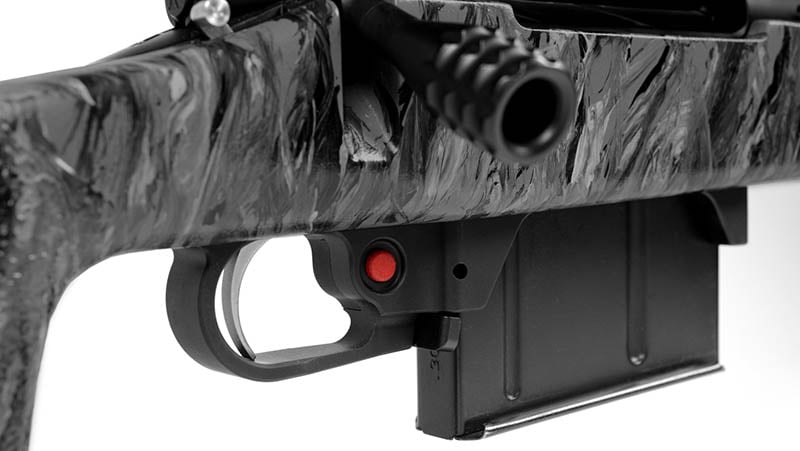
Enter TrackingPoint
While hunting in Tanzania, John McHale came across a Thomson’s gazelle, a wary species about the size of a small coyote. After a stalk, he was able to get about 300 yards from a nice male. Even with tripod-type shooting sticks and a good rifle with a six power scope, the shot proved too difficult and he missed several attempts. Disappointed, he realized he couldn’t stay steady enough while pressing the trigger perfectly.
Sure, more effective training and practice would solve this, but McHale, having a long career in network computing technology including work on the TOW missile and M1 Abrams tank, began to think how he could use existing technology to tackle the problem. After finishing his hunt and returning to the States, he started research. McHale notes, “Technology amplifies innate human ability in dramatic ways but technology had yet to be applied to shooting. The last major innovation was the invention of the telescopic sight in 1835. It quickly became apparent that applying advanced technologies like target tracking and image processing to shooting could make a huge difference. Thus, TrackingPoint was born.”

TrackingPoint is an Austin, Texas-based applied technology company that recently created the first Precision Guided Firearm, a long range shooting system that puts computer controlled “lock and launch” technology akin to the Heads Up Display of a jet fighter inside a rifle. McHale assembled a multi-disciplinary team to pull this feat off. The company currently employs 44 people, with 30 engineers having backgrounds in optics, software, electronics, and machining.
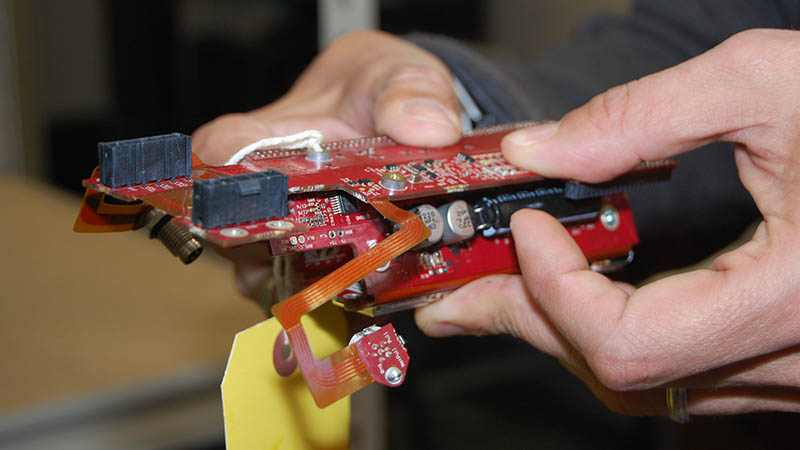
TrackingPoint calls their PGF the XactSystem, which incorporates a custom rifle, precision conventional ammunition, networked tracking scope with heads up display, and a guided trigger into a closed loop system. The XactSystem not only calculates and updates a ballistic solution for each shot 54 times a second, the system controls the trigger and only fires when the sights are properly aligned on the target predesignated (“tagged”) by the shooter, thus eliminating errors in aim, trigger control, environmental inputs and range miscalculation regardless of shooter skill level or expertise.
At the heart of TrackingPoint’s system is a ballistic computer modeled with the specific ammunition provided with the XactSystem, arriving from the factory zeroed and ready to use. A Barrel Reference System detects the optic’s relationship to the bore and adjusts for any alignment shift between the barrel and the scope. Because microscopic changes between the barrel/optic relationship can be measured by the BRS, the zero is automatically readjusted as needed. The system keeps count of shots fired and adjusts for how muzzle velocity will be affected due to barrel wear.
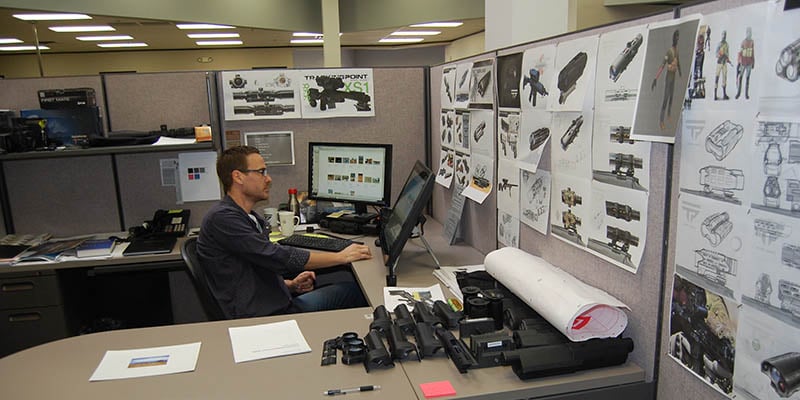
To use, the unit is turned on, the view zoomed and focused. Depending on model, XactSystems have a native optical zoom of 30x to 35x. The sequence to engage is tag, track, shoot, called TTX (Tag, Track, Xact) by the company. When a target is located, the shooter “tags” it by covering it with the reticle and holding down the tag button next to the trigger guard. The tag, indicating the point of impact, is shown by a red dot. This tag can be removed by pressing the button again.
Once the tag is on the right place, the trigger is held down, arming the system. At any point, the shooter manually inputs the effective wind speed, the only environmental factor not compensated for. The ballistic computer adjusts for range, temperature, barometric pressure, spin drift, cant, inclination and wind input. An aiming reticle appears based on the ballistic solution needed to align the bore and obtain a hit. While holding the trigger down, the shooter tracks the aiming reticle onto the tag dot painting the target. Movement of the target and rifle, as well as distance and environmental factors are continuously monitored and the ballistic solution is updated 54 times per second.

When the aiming reticle intersects the tag dot on target, and if the trigger is still being held down, the system actuates the sear and fires the shot. TrackingPoint refers to shot delivery part as “Xact” because it happens when the system detects proper alignment.
XactSystems are networked and capable of streaming video from and into the optic from an external device. The ShotView app streams video from the optic’s heads up display to a smartphone or tablet, allowing guides to mentor clients and shooters to share a first person view of a shot, in real time or recorded to video. A shot sequence from tag until ten seconds after the shot is taken can be recorded as video or still pictures, saved and shared.
TrackingPoint has three XactSystem PGFs available. All are built with custom 0.5 MOA Surgeon rifles, Krieger cut rifled barrels and include 200 rounds of Barnes Bullets XactShot ammo and an Apple iPad Mini with software loaded fit in a custom Pelican case with cleaning rod and accessories.
The XS1 is a .338 Lapua Magnum with 27″ barrel, AAC muzzle brake, 6-35X zoom firing 300 grain bullets and rated up to a minimum 1,200 yards. The XS2 is a .300 Winchester Magnum with 22″ barrel, AAC muzzle brake, 6-30X zoom firing 220 grain bullets and rated up to precision up to 1,000 yards minimum. The XS3, also a .300 Win Magnum, is a McMillan A5 with adjustable cheek piece and 22″ barrel, 6-30X zoom firing 190 grain Barnes LRX and rated to 750 yards. Prices are $19,995.00, $17,500.00 and $14,995.00 for XS1, XS2 and XS3, respectively.
Coming up tomorrow, the TrackingPoint in action.




Leave a Reply